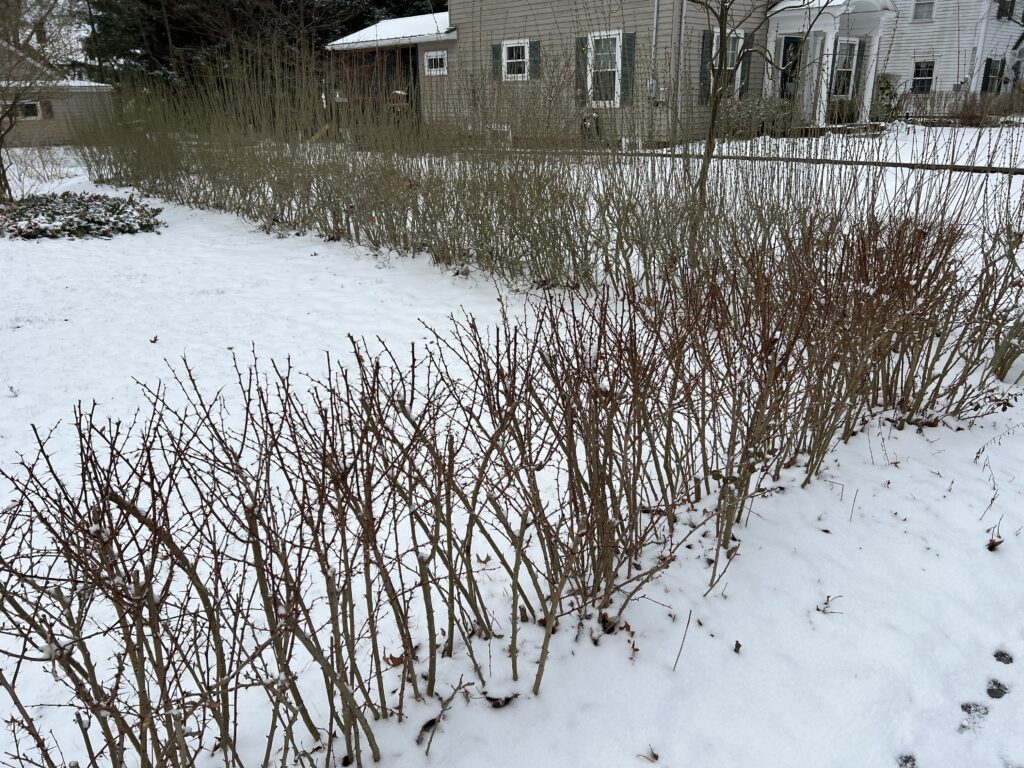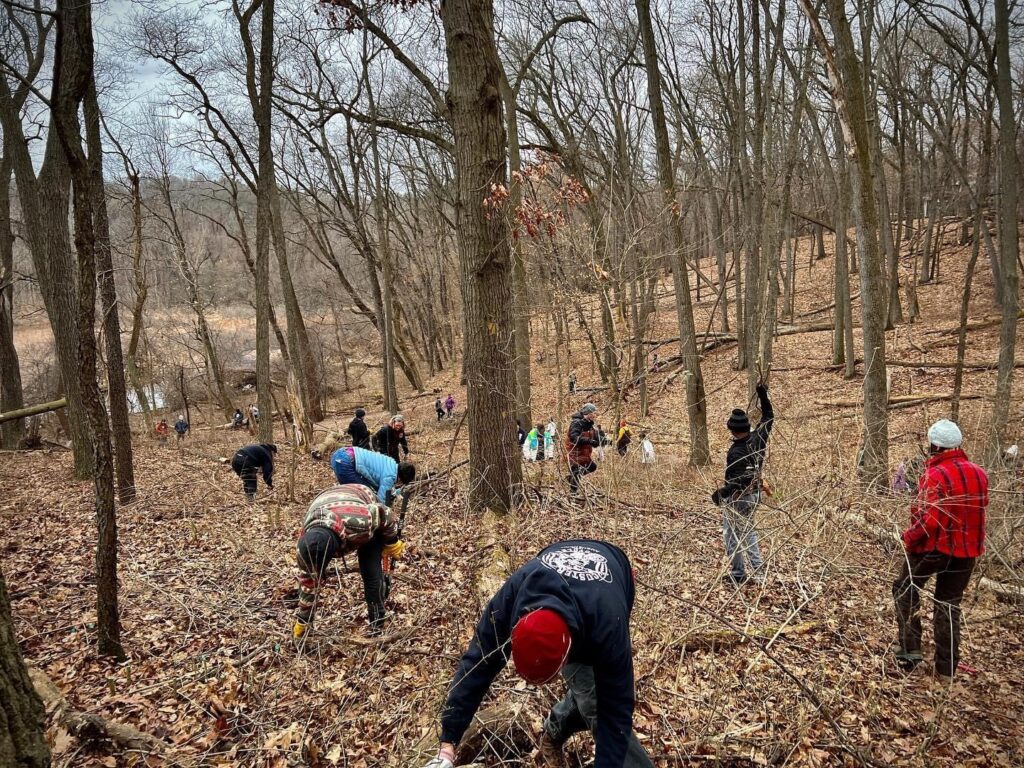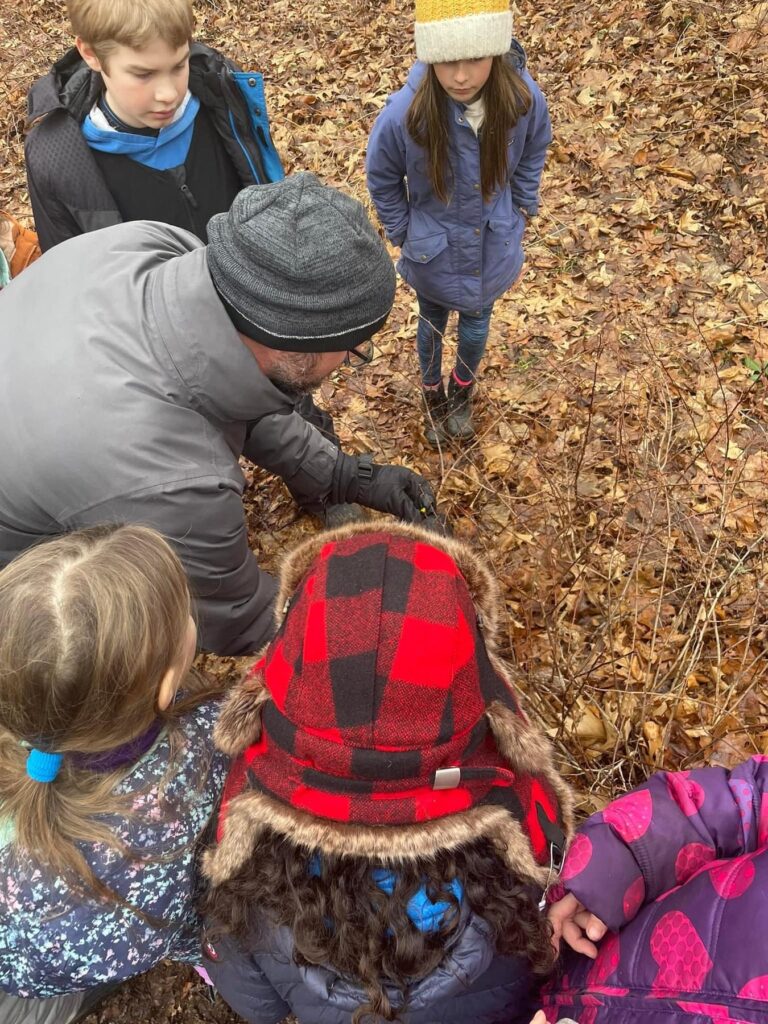by Mike Weis, KAWO member and owner of Dropseed! Native Gardens

There’s a problem lurking in your yard and it’s wreaking havoc elsewhere, whether you know it or not. Invasive species continue to be a major problem for conservation and restoration efforts and most of these invasive plant outbreaks in wilderness areas originate in our yards. Our properties are part of the local ecosystem, so whatever we do on our land impacts the entire ecosystem. What we plant in our yards matters!
According to the USDA, an invasive plant is a species that is
- Non-native (or alien) to the ecosystem under consideration; and,
- Whose introduction causes or is likely to cause economic or environmental harm or harm to human health. (Executive Order 13112).
Invasive plants have little to no relationship with our natural communities because they lack the biological evolutionary adaptations that require centuries or more to develop. As a result, these invaders provide very few to zero ecological services for our native fauna, nor are they kept in check by any natural predators. In short, invasive species upset the natural balance and order of things that have been at work for thousands of years.

The vast majority of the invasive species that we spend countless hours and dollars on removing from native habitats come from the seeds or cuttings of plants from domestic landscapes. With this in mind, it’s very important for us ecological gardeners to be able to identify the invasive species that are in our yards and to remove them so that we cut off this seed source.
The most common ones that we deal with in restoration efforts in SW Michigan are the woody shrubs, trees and vines that escape cultivation—Privet, Japanese Barberry, Asian Honeysuckle, Autumn Olive, Buckthorn, Multiflora Rose, Vinca Vine, English Ivy, Asian Bittersweet, Bradford Pear, Norway Maple, and Tree-of-Heaven. All of these species are very common in the conventional nursery trade. These plants are easy to identify right now because they leaf out earlier than our native woodies, which is one of their many problems—they are sunlight hogs! Shading out the herbaceous layer prevents our beloved spring ephemeral wildflowers from growing. No early wildflowers = no food for early pollinators.

One particular scourge, Burning Bush, is probably the most difficult for me to convince homeowners to remove from their yards. Euonymus alatus is an extremely popular landscape shrub that seems to be ubiquitous in suburban yards across most of the United States. Homeowners and landscapers plant it because it grows super fast and the fall color is brilliant red (but super fleeting, and for most of the year it’s quite ugly, IMO). Unfortunately, this Asian species is highly invasive. It’s banned in Massachusetts and New Hampshire, but elsewhere the conventional nurseries continue to push this menace on their customers.
I spend my winters doing ecological restoration for hire as well as volunteer work for the Southwest Michigan Land Conservancy and Stewards of Kleinstuck. A couple months ago we were working in an oak savanna at the Chipman Preserve that was choked with invasive species. The main culprits were Oriental Bittersweet, Autumn Olive, Honeysuckle and Burning Bush. None of these species were intentionally planted in this rare ecosystem. The seeds were carried to this spot by way of bird poop from when they feasted on the berries from domestic landscapes. As a result, the native flora was suppressed by these garden escapees and the fauna suffers from a lack of quality native habitat (food, shelter and breeding grounds). This is a big problem but can be solved by not planting exotic species in your yard; and, if they’re already there, please remove them.

That is exactly what I did recently. My client moved into her new home a few months ago and hired me for an ambitious project to restore her yard to be a functional habitat for birds. The first, and probably the most important step, was to remove the invasive species that were planted in the 1970s. I removed thirteen Burning Bushes, a large colony of Asian Honeysuckle, a few Asian Cherry trees, a couple White Mulberry and quite a few Japanese Barberry shrubs. When the weather warms I will return to tackle the Vinca Minor (aka “Periwinkle”) that is carpeting a section of her yard that has wonderful native Hemlocks and White Pines. With the cuttings we created a brush pile in the corner of her yard that will serve as shelter for overwintering birds and many other valuable fauna. Brush pile tip: plant native Virgin’s Bower (Clematis virginiana) vine near it so that it can weave through the pile, creating beautiful flowers and excellent forage for birds.
As a replacement for these shrubs I have a few native options in mind like Shrubby St. John’s Wort, Red Osier Dogwood, Dwarf Chinquapin Oak, (native) Bush Honeysuckle, Fragrant Sumac, Nannyberry, Winterberry, Black Chokeberry, and Shrubby Cinquefoil. All amazing-looking native shrubs that are highly functional for pollinators and birds.

The question I frequently get asked is, “How do I get rid of the invasive shrubs in my yard?” (Everything you need to know can be found here.)
- Identify
- Cut
- Immediately apply herbicide to the wound. This is known as the “Cut Stump Treatment” method. If you do not want to use herbicide, then you will have to continually cut back the stump to prevent regrowth of shoots for successive years. Eventually, the plant will run out of energy and die off.
- Discard properly (This step depends on the species. Use this resource that goes into best practices detail for each species.)
- Replace with a native option
This is the second question that I get—“What do I plant once I remove the invasive species?” There are many options and the answers are dependent on the specific conditions. But for some quick ideas, here’s a really helpful list of native replacements by the great native plant nursery in Illinois, Possibility Place.
